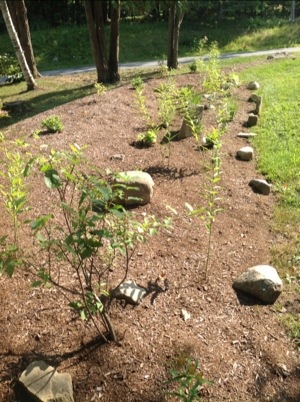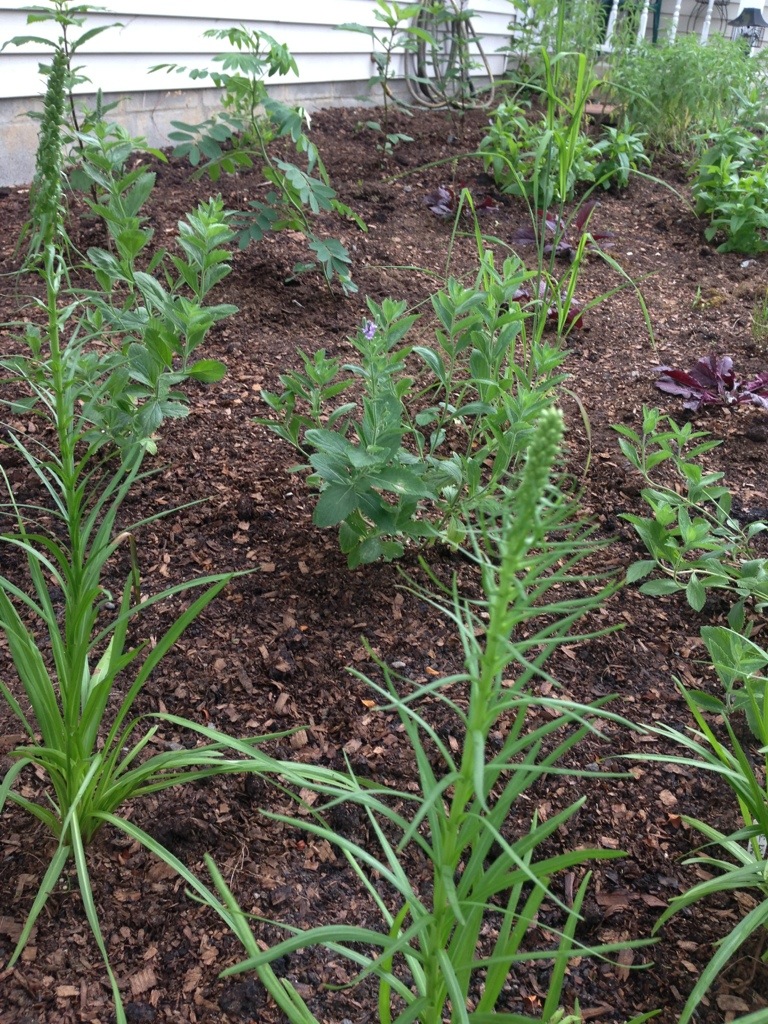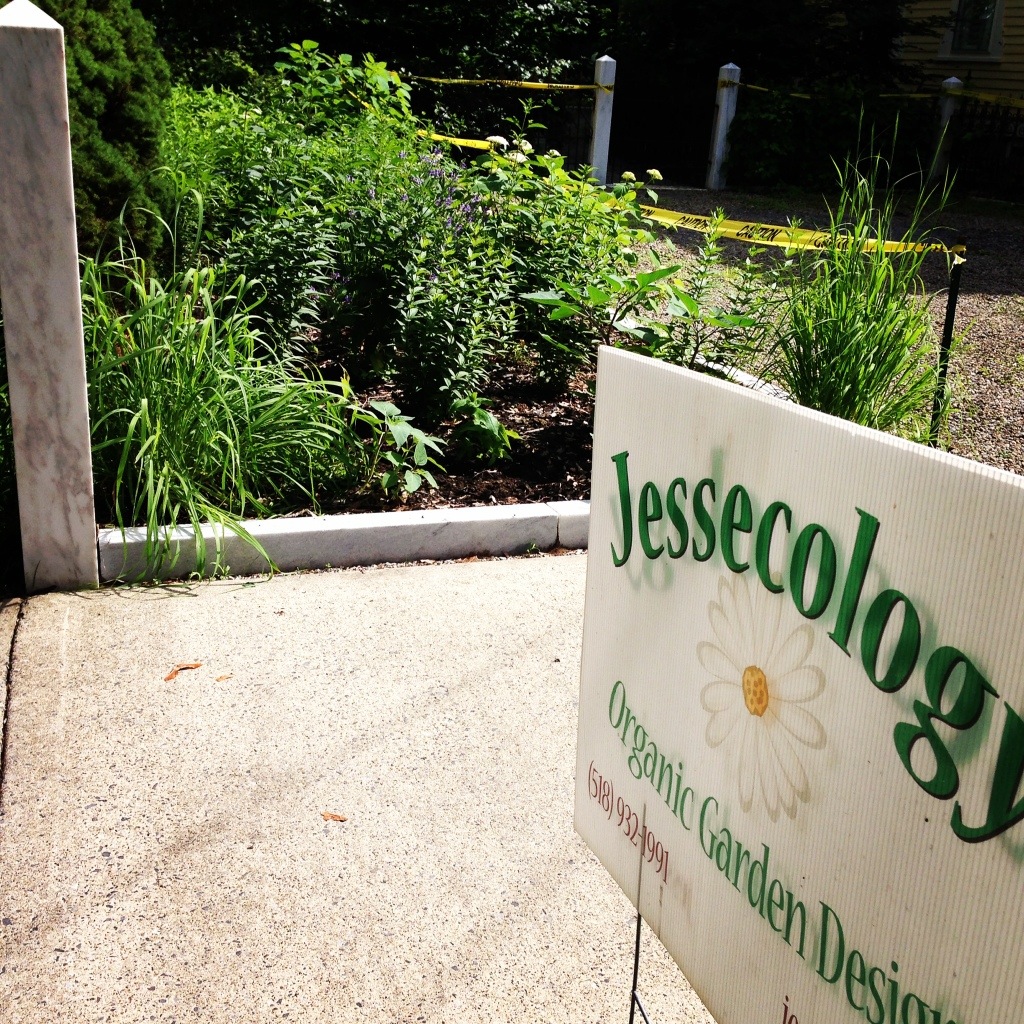Butterfly Garden DIY: How To
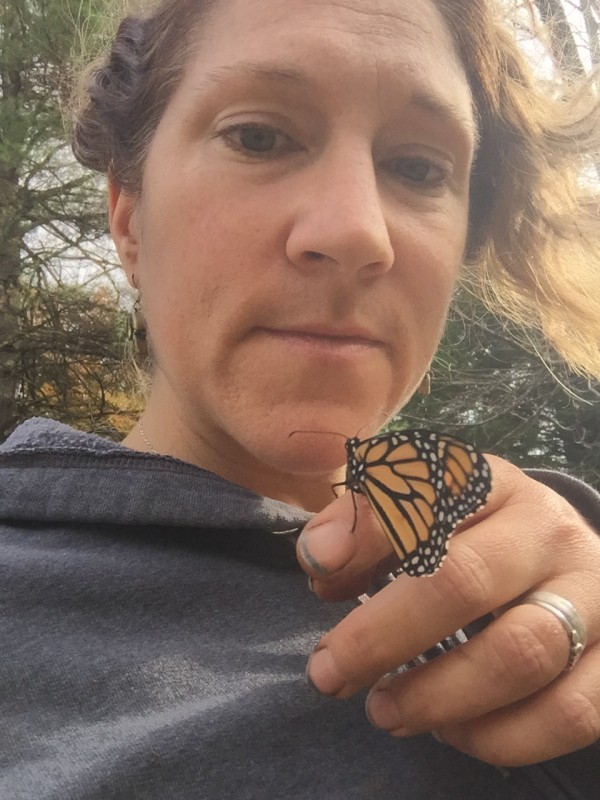
Jesse taught a workshop at a regional garden expo. “Butterfly Garden DIY: How To” was the topic. Subsequently we’ve heard from folks who wanted to attend and couldn’t. This post will summarize the butterfly habitat gardening presentation. A wildlife biologist friend writes frequently about butterfly gardening and the lifecycles of butterflies. The Xerces Society’s book Attracting Native Pollinators has lots of valuable insight, and so does the naturalist Judy Burris’ book Lifecycles of Butterflies.
A Sophisticated Pursuit.
Attracting and supporting butterflies with a garden is a sophisticated pursuit. It is a practice refined by time, like a chess game. And yet paradoxically, growing habitat and providing for the butterflies’ entire lifecycle is also simple. Unlearning mistakes is a big piece of the challenge most American gardeners face. There exists a natural organization with organic principles. Becoming aware of this existing natural structure and adhering to the basic facets taps into a perfect system. Butterflies seem to appear overnight. Delineating this system is the hurdle. With the input of ecology education, we can seamlessly create butterfly habitat gardens in our communities.
Do No Harm.
The first principle of butterfly garden DIY is, “Do no harm.” No pesticides or herbicides can be used anywhere on the property. None at all. Even diatomaceous earth, which is “organic” is not okay to use in butterfly gardens. Diatomaceous earth kills caterpillars on contact. Creating a non-organic garden that attracts butterflies is mean. Treating the butterfly garden with pesticides and herbicides is like dosing your New Year’s punch bowl with poison. Natural planting means natural planting.
Native Plants Only.
In new butterfly gardens, only native species plants should be used. The US Department of Agriculture defines a native plant as “One that occurs naturally in a particular region, ecosystem or habitat without direct or indirect human intervention. The flora present at the time Europeans arrived in North America is the species native to the eastern US.” Native plants include all kinds of plants. Ranging from mosses and ferns to wildflowers, shrubs, trees and grasses. Fortunately, the use of native plants precludes the need for artificial fertilization or poisonous pest controls. The native plant species are super low maintenance. Fertilizing them is counterproductive as it actually gives strength to weeds and invasive plants.
Lifecycles of Butterflies:
We traditionally think of the butterfly garden in terms of nectar plants for adult butterflies. This is the most visible part of butterfly gardening. Having a true butterfly sanctuary means butterflies live out their entire life sequence in our gardens. Butterflies popping by a garden with introduced flowers (like Daylily) and then leaving is a drag. Remembering that there’s four stages in the lifecycle of butterflies is important. It’s our work as habitat creators to provide for every stage of life. Nectar plants are important for the adult butterflies to flourish. Luckily, most summer blooming native plants offer nectar. A butterfly waystation needs much more than Milkweed. There are hundreds of indigenous butterfly and moth species. All of them with unique larval host plant needs. And 100% of them need native nectar plants in adulthood.
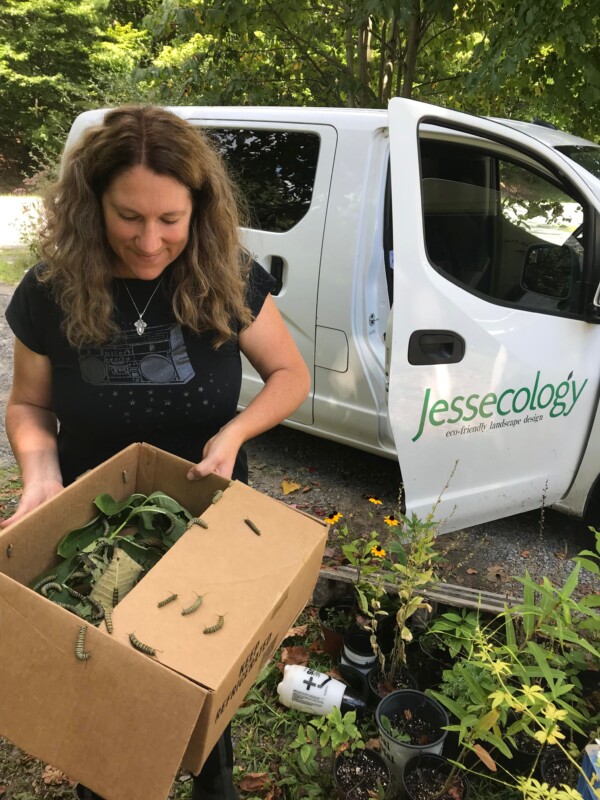
A butterfly’s lifecycle evolves from an egg to larvae (caterpillar), pupae (cocoon or chrysalis) and after metamorphosis, adult butterfly. The caterpillars are specific feeders, not nectar generalists like the adult butterflies. Adult butterflies have a proboscis for a mouth. The changed mouth shape means adults are incapable of chewing leaves as they used to. Caterpillars eat foliage of a very limited variety, called “host plants.”
Butterfly Host Plants:
Adult female butterflies are sharp and observant. They will only lay their eggs on or nearby their species host plants. They know their offspring needs a chance to feed after hatching. It is best practice for us to avoid the “butterfly porn” mentality of strictly nectar bearing plants like Buddleia “Butterfly Bush.” Buddleia is an invasive species in some US states so it shouldn’t be planted at all. Beyond that it’s a non-native introduced plant with zero habitat beyond gushing nectar. (Which is an easy trick. Hot water plus sugar in the kitchen and you can gush nectar too.) No native caterpillars use Buddleia as a host plant. Songbirds see it as a wasted space in the garden. By planting native butterfly host plants, meaningful relationships are forged with the butterflies in our gardens. Avoiding the Buddleia “butterfly porn” mentality is important for good long-term garden relationships.
Butterfly Species Education.
Become familiar with the butterflies that live in your region. The long list of butterflies we can attract to butterfly gardens in Albany, Niskayuna + Saratoga, NY is impressive. There’s more return on efforts when focus is limited to one or two species of butterflies each year. Ecological progress goes at its own pace. Try to give them everything they need- host plants, flowering native perennials, native grasses, trees and shrubs. This narrow focus on one or two butterfly species in our garden can actually have a cumulative effect of seeing more species of butterflies as many adults will visit the nectar plants.
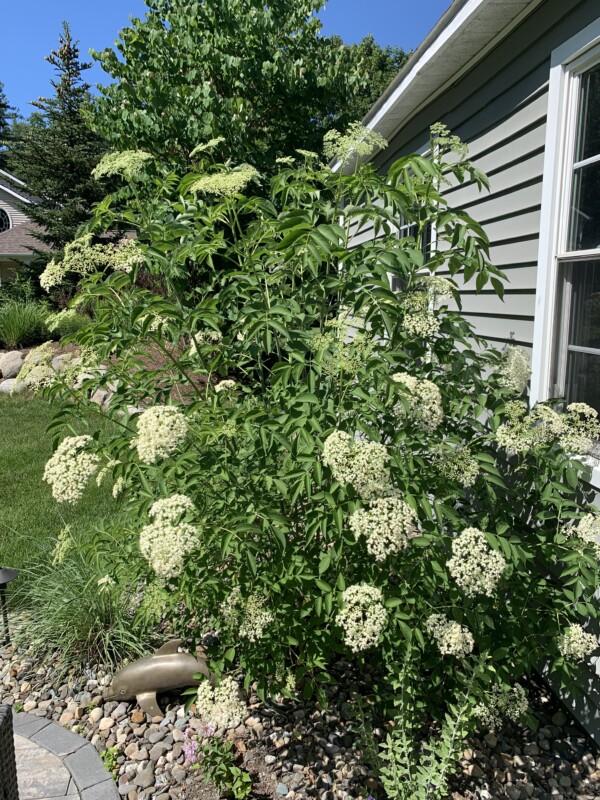
Trees + Shrubs:
Though often overlooked, trees and shrubs are an important part of the butterfly garden. Pound for pound woody plant’s foliage weigh more as caterpillar host plants than herbaceous plants do. Oak trees support 543 different species of butterflies and moths in the US! Trees and shrubs provide shelter for adult butterflies. This means safety from predators like birds, protection from rain and windstorms and a place to sleep. If you’ve always wondered where butterflies sleep: they fold up their wings and hide under tree leaves. Trees can be strategically placed to avoid shading out the sun-loving garden. Two good locations to plant trees are property edges or the north side of the house.
Butterfly Garden Design:
Martha Stewart was right about a couple concepts in gardening. We want to plan for 3 seasons of color with native blooming flowers. Large clusters of plants are best. This makes it easier for the adult butterflies (who have a different kind of eyesight than we do) to see the host plants and nectar plants when they’re flying over the butterfly garden.
Be patient. It can take 2-3 years before the butterfly sanctuary status is notable in your garden. Adult butterflies may need time to find your garden and lay their eggs. And the native habitat plant species you’re planting might need some time to get established as well.
Cleanliness does not equal godliness in the butterfly (or songbird, or pollinator) garden. Nature is wild and so our naturalistic gardens reflect that. Many “weeds,” like Violets are butterfly host plants. They feed the larvae of specific species of butterflies. And, for the record, Violets are a native wildflower. It is good to leave these host plants at woodland edges and other spaces on your property for habitat re-generation.
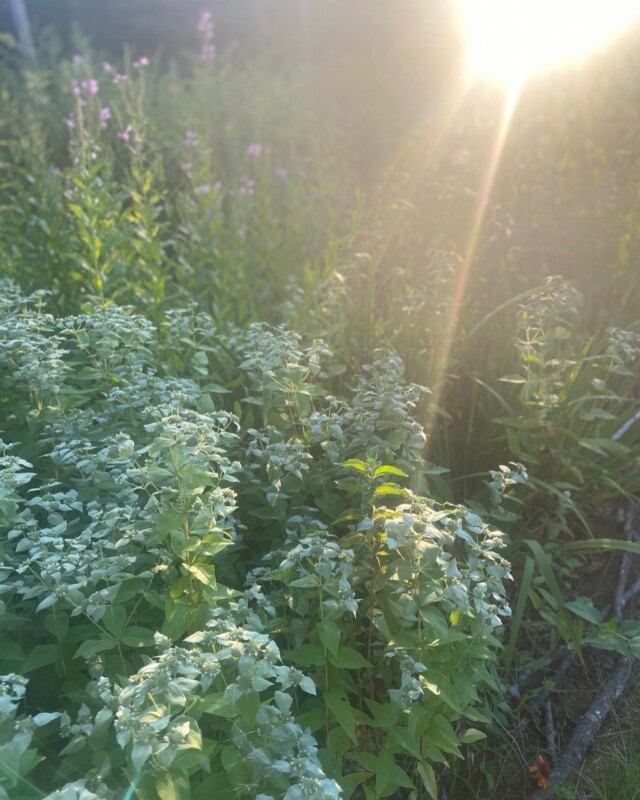
Land Stewardship:
Dead trees and fallen leaves are necessary for our native wildlife’s habitat. Society’s obsession with bagging up leaves in the fall is counterproductive. Certainly, leaves are future compost. Besides that, 25% of landfill material is leaf waste, which isn’t really garbage. Leaf waste is immeasurably valuable. Leaves decompose where they fall and create a perfect fertilizer. It’s free and tailored to provide exact nutrients to the tree they came from. This eliminates a need for fertilizers. Further, the habitat value of ground level leaf debris is limitless. Butterflies use fallen leaves for their cocoons. Ground nesting birds, salamanders, toads, predator insects and many more native wildlife species find protection and breeding ground in fallen leaf material. Leaf compost is an easy start to the butterfly garden DIY project.
If you love butterfly gardens and would like to hire our landscape design/build team for a project, we’d love to meet you. Fill out our customer intake form and we’ll be in touch soon!

